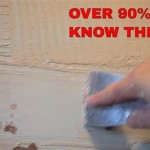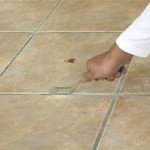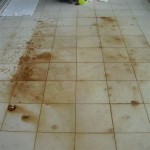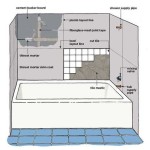How to Install Backer Board for Tile
Installing tile is a popular way to enhance the beauty and durability of a space. However, simply applying tile adhesive to the subfloor is not always sufficient. In many cases, a layer of backer board is essential for a successful and long-lasting tile installation. Backer board is a waterproof, rigid material that provides a stable and moisture-resistant base for tile, preventing cracking, delamination, and other problems. This article will guide you through the process of installing backer board for tile, ensuring a strong foundation for your project.
1. Preparing the Subfloor
Before installing backer board, it is crucial to prepare the subfloor to ensure a level and even surface. This step is crucial for a properly installed backer board and a successful tile installation. Start by removing any existing flooring or coverings. Then, inspect the subfloor for any unevenness, cracks, or damage.
If there are any imperfections, address them accordingly. Uneven areas can be leveled using self-leveling compound. Cracks and damage should be repaired using appropriate patching materials. Once the subfloor is repaired, ensure it is clean and free from debris and moisture.
2. Cutting and Installing Backer Board
Once the subfloor is prepared, you can begin cutting and installing the backer board. Start by measuring the area where the backer board will be installed. Then, using a utility knife or a circular saw with a carbide-tipped blade, cut the backer board into the desired sizes.
Installing backer board typically involves adhering it to the subfloor using thin-set mortar. Apply a thin layer of mortar to the backer board, ensuring it covers the entire surface. Secure the backer board to the subfloor using screws or nails, driving them through the pre-drilled holes in the backer board.
When installing multiple backer boards, ensure they are butted together tightly. Stagger the seams of the backer board sheets to distribute the load effectively. Use a utility knife to trim the edges of the backer board to fit tightly against walls and other obstructions.
3. Sealing and Finishing Touches
After installing the backer board, it is essential to seal the seams and edges to prevent moisture from penetrating the subfloor. Use a waterproof sealant specifically designed for backer board. Apply a thin layer of sealant to the seams and edges, ensuring it fills any gaps and creates a watertight barrier.
Before applying tile, allow the sealant to dry completely. Once dry, you can proceed with applying thin-set mortar and installing the tile. Remember to use a grout that is compatible with the backer board to ensure the best results.
Installing backer board is a critical step in any successful tile installation. By following these steps, you can ensure a solid foundation for your tile, preventing problems and extending the life of your tile flooring.

How To Install Cement Board The Home Depot

How To Install Hardiebacker Cement Board On Floors James Hardie Pros

How To Install Cement Board For Tile Projects Diy Family Handyman

How To Install Cement Backer Board For Floor Tile Installation The Home Depot

How To Install Cement Board The Home Depot

How To Install Cement Board The Home Depot

How To Install Goboard Tile Backer Board Diytileguy

Tile Backer Board Installation Key Steps For A Quality Armchair Builder Blog Build Renovate Repair Your Own Home Save Money As An Owner

How To Install Cement Board The Home Depot

How To Install Cement Board On A Floor Diy Family Handyman
Related Posts








